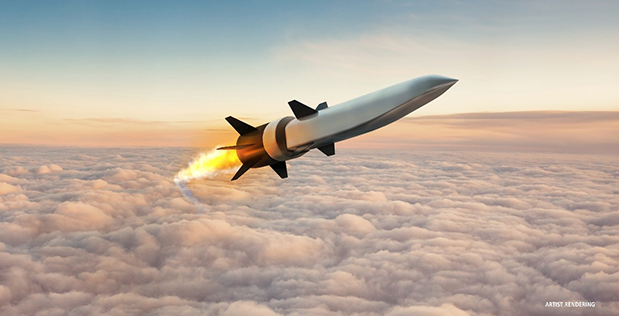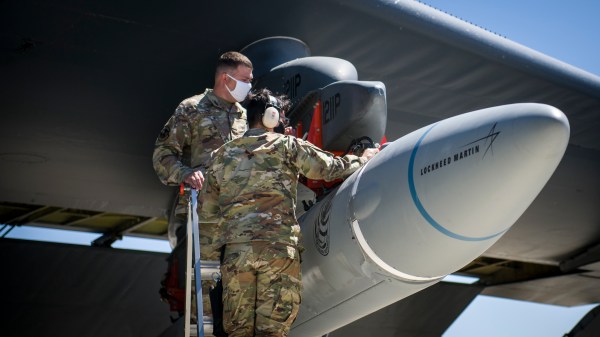Recent hypersonic missile test set scramjet endurance record, DARPA chief says

A recent flight test of a prototype of the Hypersonic Air-breathing Weapon Concept set an endurance record for scramjet engines, the head of the Defense Advanced Research Projects Agency told lawmakers Wednesday.
Hypersonics are a top technology priority for the U.S. military as it seeks to keep pace with China and Russia.
“Hypersonic flight at velocities of more than five times the speed of sound offers major strategic advantages, especially for conducting military operations from longer ranges, with shorter response times, and enhanced effectiveness compared to current military systems,” DARPA Director Stefanie Tompkins said Wednesday in written testimony to members of the Senate Armed Services subcommittee on emerging threats and capabilities.
On Tuesday, DARPA announced that the agency in partnership with the U.S. Air Force has completed a flight test of a Lockheed Martin variant of the Hypersonic Air-breathing Weapon Concept (HAWC).
“The vehicle, after release from a carrier aircraft, was boosted to its Aerojet Rocketdyne scramjet engine ignition envelope. From there, it quickly accelerated to and maintained cruise faster than Mach 5 (five times the speed of sound) for an extended period of time. The vehicle reached altitudes greater than 65,000 feet and flew for more than 300 nautical miles,” DARPA said in a news release.
At the Senate subcommittee hearing Wednesday, Tompkins said the test broke existing records.
“This test set the U.S. record for scramjet endurance, and we believe it’s an inflection point on the path to reclaiming U.S. leadership in hypersonic weapons,” she told lawmakers.
Cruise missiles such as the HAWC equipped with scramjet engines use air captured from the atmosphere to achieve sustained propulsion, whereas other hypersonic systems under development such as boost glide vehicles use rocket propulsion systems to reach high speeds.
“The HAWC vehicle operates best in the lower atmosphere, where speed and maneuverability make it difficult to detect in a timely way. It could strike targets much more quickly than subsonic missiles and has significant kinetic energy even without high explosives,” Tompkins told lawmakers.
Last year the agency also flight tested a HAWC prototype built by Raytheon Technologies, which was equipped with a scramjet engine built by Northrop Grumman.
The most recent test featured a different design by Lockheed.
“This Lockheed Martin HAWC flight test successfully demonstrated a second design that will allow our warfighters to competitively select the right capabilities to dominate the battlefield,” said Andrew “Tippy” Knoedler, HAWC program manager in DARPA’s Tactical Technology Office. “These achievements increase the level of technical maturity for transitioning HAWC to a service program of record.”






